The Best Deals on Camping, Backpacking and Outdoor Gear [June 2025]
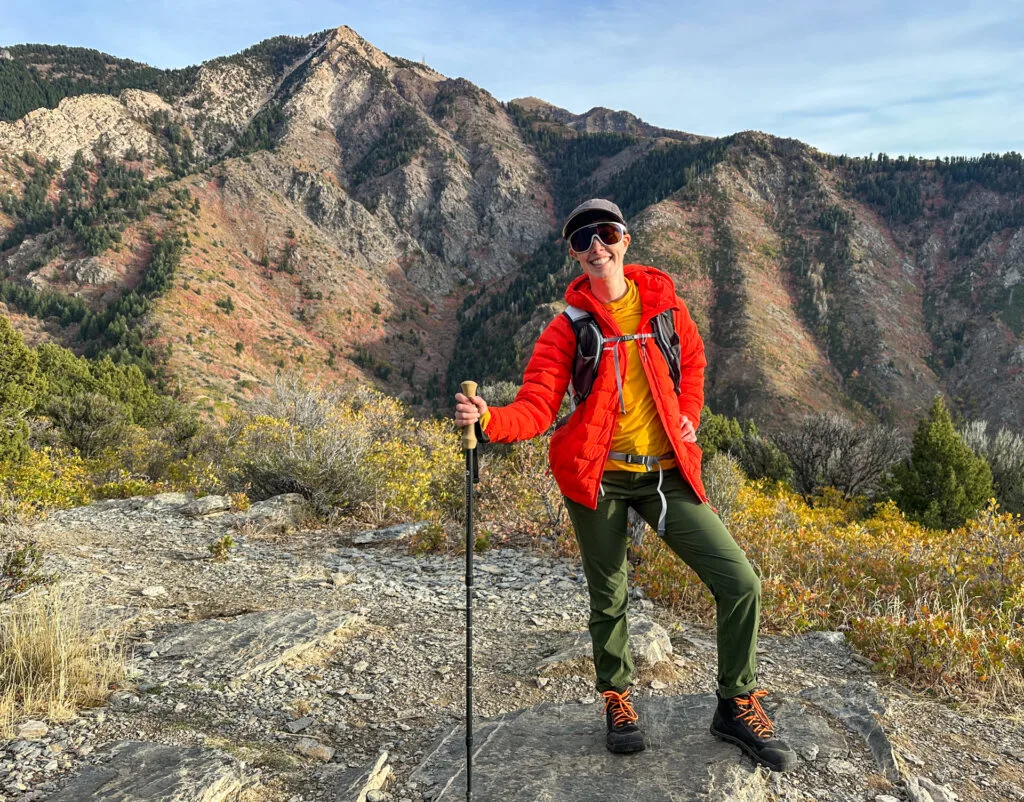
A zero-drop, barefoot-style, minimalist boot that ALSO keeps you grounded?! We tested the Bahé Rediscover barefoot-style grounding boot to see not only how they felt and performed on the trail, but if earthing shoes are really all they’re cracked up to be. Read on to see what grounding shoes even are, what purported benefits they might have, and how these minimalist boots stack up to other barefoot winter boots we’ve tested before.
Warning
These shoes should not be worn in areas or at work sites where live electricity may exist. They will not keep you grounded in the traditional sense of “protecting you from electrical current.”
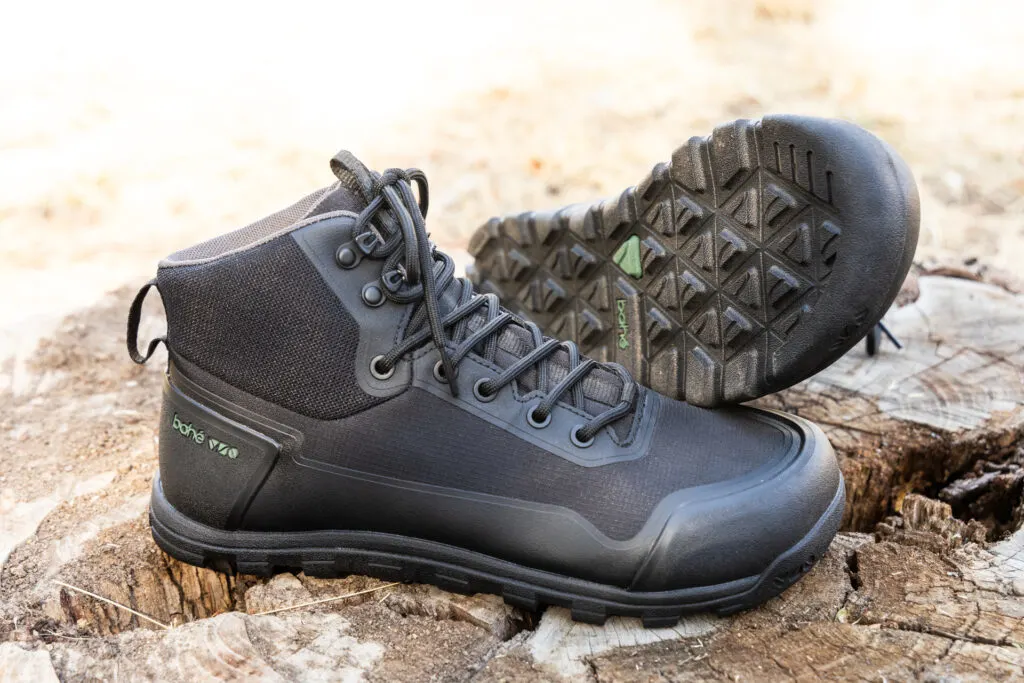
What the Heck is Grounding (or Earthing)?
Grounding or earthing boots are designed a bit differently from traditional footwear. After all, they’re meant to allow the mild electrical current generated by the earth to cycle through your body, just like they would if you were barefoot.
Usually this is only available when you’re barefoot in soil or other natural surfaces, but you can’t always be barefoot in soil, like in the winter, so Bahé–and other shoe brands like Earthrunners, which makes some of our favorite hiking sandals–have concocted a system that supposedly allows this transference of energy through your shoes.
In Bahe’s case, it’s done via four conductive layers in the shoe: there’s a conductive material added to the outsole, a conductive material looped through the midsole, and then conductive stitching on the inside bit (called the Strobel board), and on the removable insole.
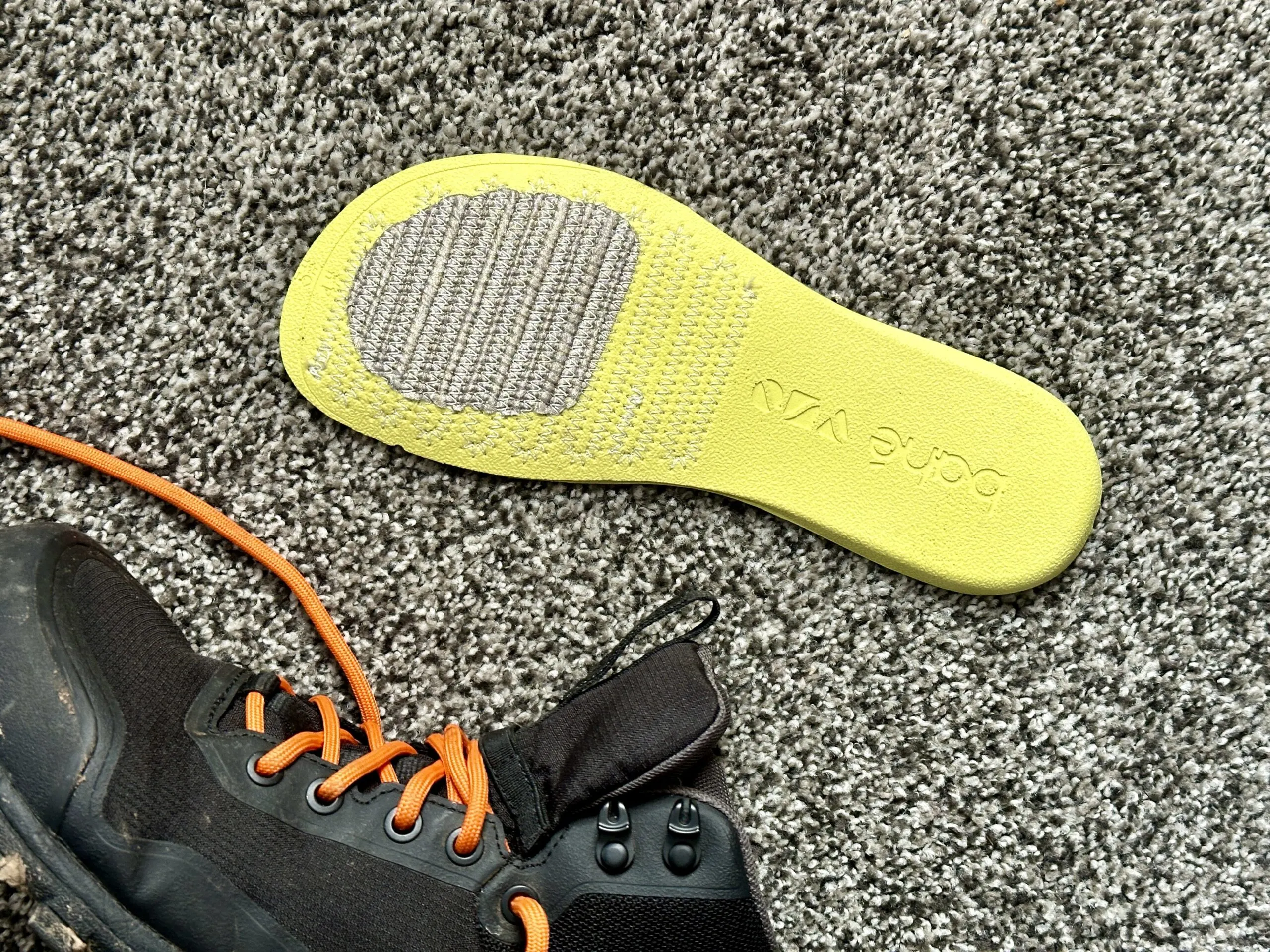
And yes, they are certified conductive and have close to zero electrical resistance. And yes, they do have a video test comparing being barefoot on grass to conventional footwear to Bahe shoes online if you want to see that (but we tested it too; more on that below).
But why the heck would you want to be “grounded” to begin with? Well, the science is still young, but some tests have already started to show that grounding or earthing can have anti-inflamatory effects, help speed up wound healing as well as post-workout recovery, even promote calm and better sleep.
It’s not clear how MUCH grounding you need to see these benefits or how OFTEN, but the data points to 30 minutes of daily grounding as a pretty good place to start. I’m not saying you should stop taking medicine or listening to your doctor, but in most cases, spending time outside with your feet in the grass isn’t going to hurt anything, so give it a go. And if you can’t spend that much time outside barefoot (like in the winter), maybe it’s time to consider a pair of shoes that keep you grounded via conductive construction.
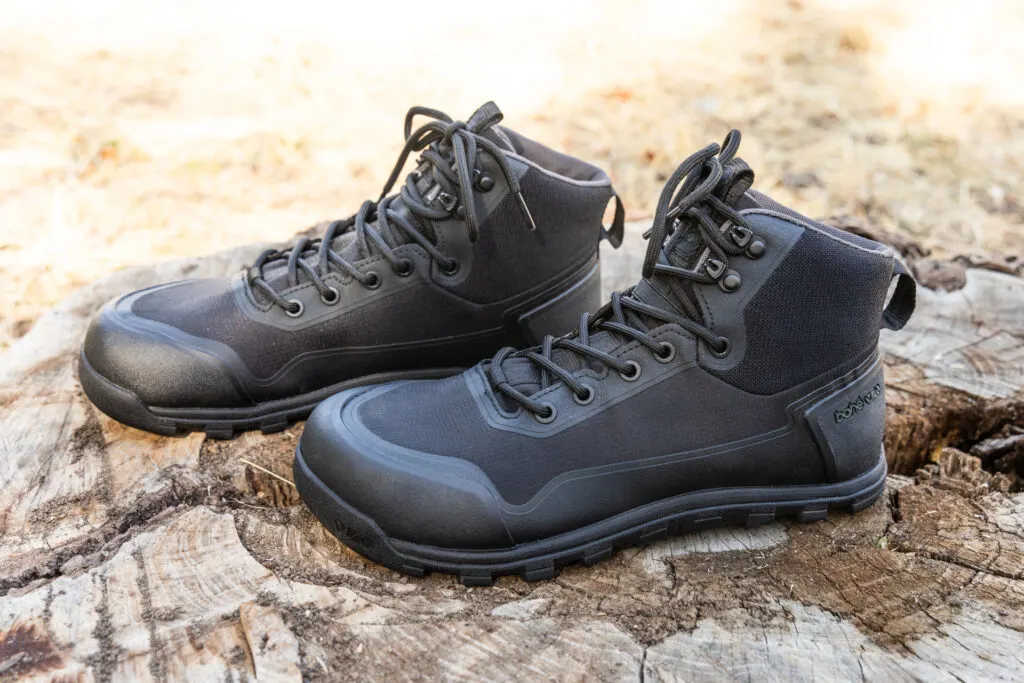
Bahé Rediscover Boots: Features
As for the Bahé boots themselves, they have plenty of features and details that you expect to find in a good hiking boot, including those that will appeal to the barefoot crowd, winter wanderers, outdoor workers, and more:
- A minimalist style hiking boot
- Fully waterproof
- Wide fit for wide feet (but fits smaller feet, too)
- Zero drop
- Sticky grip with 4.5mm lugs on the outsole
- Come with extra ‘adventure orange’ laces
- 18mm total stack height
- EcoElite™ bio-based and non-fluorinated (PFAS-free) water-resistant finish
- Cleansport NXT all-natural, probiotic odor control treatment on footbed
- Rubberized heel and toe caps
- Back and tongue loops for easy on-and-off and adjustments
- Totally vegan
- Certified to be conductive in accordance with EN ISO 20344:2011
But while details are great, the proof is in the pudding, as they say (no pudding was involved in actual testing). So while we were intrigued by the product listing, we were determined to take them out to test and see if they are all they’re cracked up to be (and worth the price tag).
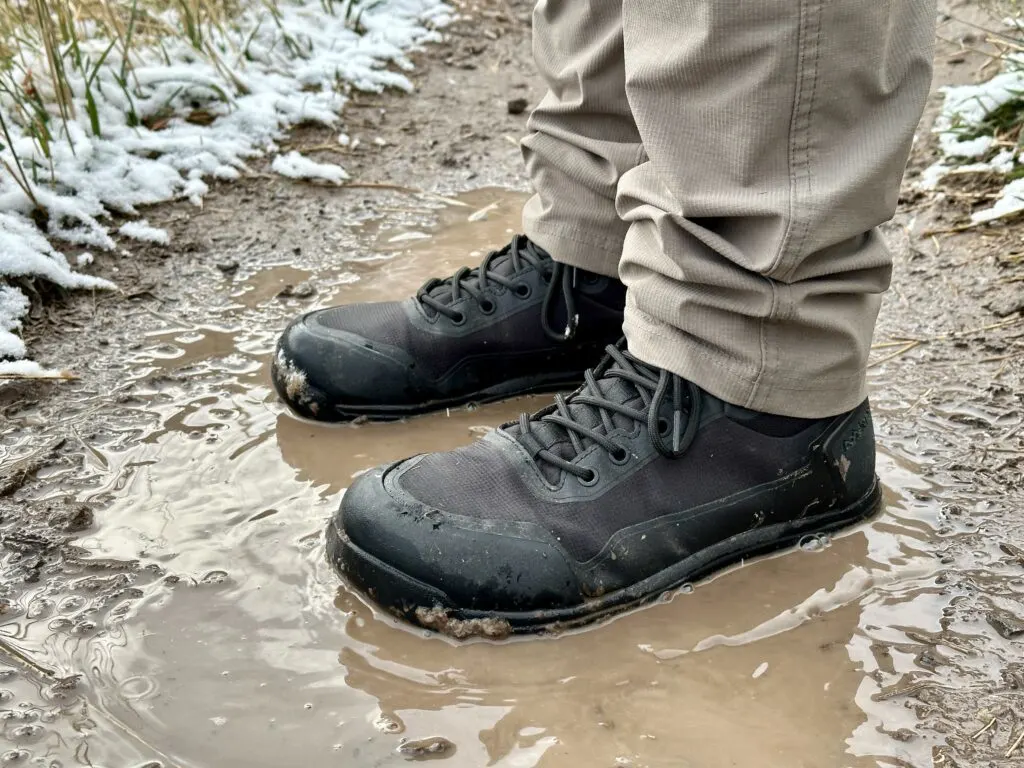
Bahé Boots: The Review
Josh and I each tested a pair of the Bahé Rediscover grounding boots this fall in Utah. We went hiking, did some landscaping work planting trees on a nearby plot of land getting re-naturalized, and put them through the wringer testing comfort, waterproofing, functionality, warmth, you name it in temps ranging from 30ºF to 50ºF. We even compared them to a few other pairs of barefoot waterproof boots to see how they stack up (which may be helpful if you’re already familiar with brands like Xero and Lems). So read on to see if they’re for you.
Grounding
Naturally, the first thing we wanted to test was the grounding feature. After all, it may be the boots’ main selling point. It’s at least what makes them most unique, especially in a winter boot designed to function in cold seasons when most people are a lot less likely to spend time barefoot outdoors. So we wanted to test out whether you could detect a measurable amount of voltage flowing from the ground to the rest of your body when compared to more traditional footwear.
So we got a voltage meter, plugged one end into the ground and held the other end. When barefoot, the meter read close to 0 megohms (meaning no resistance, which is what you want). When in traditional footwear, there was no reading, indicating there was no connection or circuit at all. And when barefoot in the Bahé Boots, the meter read close to 0 megohms again. However, when wearing socks inside the boots–whether they were synthetic or wool, a natural fiber–there was no reading, indicating that our feet were partially, if not completely insulated from the earth’s current.
We tried spraying our socks with a saltwater solution until they were damp, and that seemed to boost conductivity. If we gave it a few minutes, the meter even got down to around 10 megohms (an idea reading is between 0-5). But our socks were pretty damp to the point that I would be uncomfortable hiking in them. Given enough time and an average amount of sweat, you may still be able to ground with the boots on, but that will require more testing.
In short: when wearing socks, which you will presumably be doing, the claimed grounding effects of these boots may be glitchy at best and nonexistent at worst.
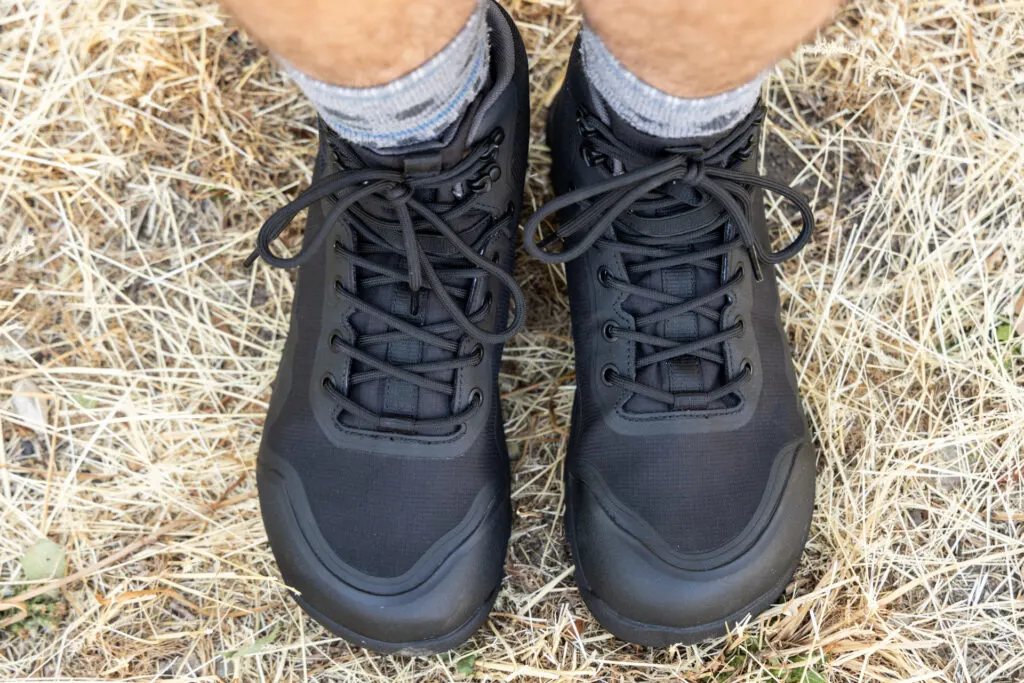
Appearance
Right off the bat, neither of us was in love with the shape and design of the boots. They’re…large. Maybe it’s because I’m such a small person, but they felt a little like clown shoes with that extra large toe box when I first put them on. To be fair, we’ve tested other boots with a similar shape, and there’s nothing actually wrong with it, it’s just a matter of personal preference.
There are also four rather attractive neutral colors available: green, brown, black and tan. All very natural and gender-neutral. We tested the all-black version. They all come with standard black laces plus bright orange ones, which is fun. I swapped mine out right away.
As for build quality and materials, they weren’t quite as high quality as some other shoes we’ve tested in the past. You know when you open up the shoe box on some shoes you can just immediately see how much thought went into the design and procuring the perfect materials for every part and piece?
Weight
But despite how chunky they LOOK, they’re not super heavy. A women’s size 7 weighs 14.65oz per shoe, which is heavier than some of the other barefoot winter boots we’ve tested, but lighter than many more traditional hiking boots, so that’s something. And lightweight boots are nice in winter because even when it’s cold outside, I don’t want big heavy boots weighing me down.
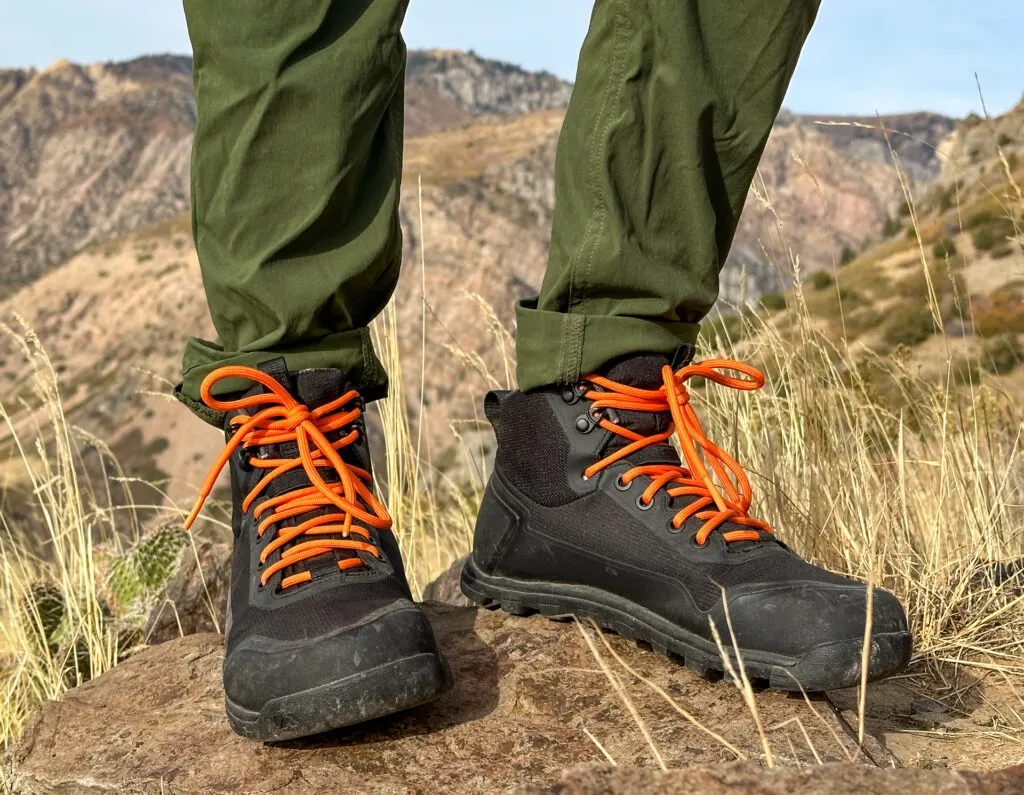
Fit
But they are just the right amount of roomy when ordered in our regular sizes for thick, warm socks. In fact, there was plenty of room, especially in the toe box. I have narrow feet, but found the lacing offered plenty of room to cinch the boots down for a nice snug fit or loosen them up if you have wider feet and ankles. And that includes on the ankles, which are soft and flexible to start but should become even more so with use.
What I don’t like as much is the heel cup. It’s hard and rigid, which means after about two miles of a steep and consistent uphill, I was feeling the start of a blister forming. There was definitely a hot spot. Now, this could be because I have narrow feet, as previously mentioned. Which means for those with really slim feet, these might not be the best choice. Josh, on the other hand, has more average sized feet and found the boots to fit mostly perfectly, though he also reported some slippage and rubbing in the heel when hiking uphill.
In both cases, that hot spot mostly disappeared once we started going downhill, but that’s still an uncomfortable place to be. More strategic lacing techniques might help a bit, but chances are that wider feet (and/or thicker socks) may be best suited for these boots. There weren’t any hot spots anywhere else on our feet, so that’s a plus.
I did order my usual size in barefoot boots: a women’s 7, and Josh usually wears a 9.5 but got a 9. Bahé’s website suggests sizing down if you’re between sizes or are new to barefoot shoes, and we agree that’s probably a wise choice as they seem to run a smidge large.
Function
When we hit the trail, we were pleased to discover the soles were pretty flexible, so they offered a fair amount of freedom of movement, which is what I want in a barefoot or minimalist boot. The soles were still plenty thick to protect from rocky surfaces and separate your feet from the cold ground. Which means they’re certainly not the most minimalist and barefoot-y soles we’ve ever experienced on barefoot shoes, but they’ll likely be popular with folks transitioning or who prefer a more protective sole.
The lugs are triangular and deep and sticky enough to provide more than adequate traction. When hiking up steeps slopes with loose dirt and leaf litter, mud, even snow, I didn’t slip once.
As for whether I could tell if the grounding functionality actually did anything, well, the meter reading says current is there, and the science seems good, but research is still pretty limited. So practicing grounding certainly can’t hurt, it’s likely beneficial, but don’t treat it as a cure-all.
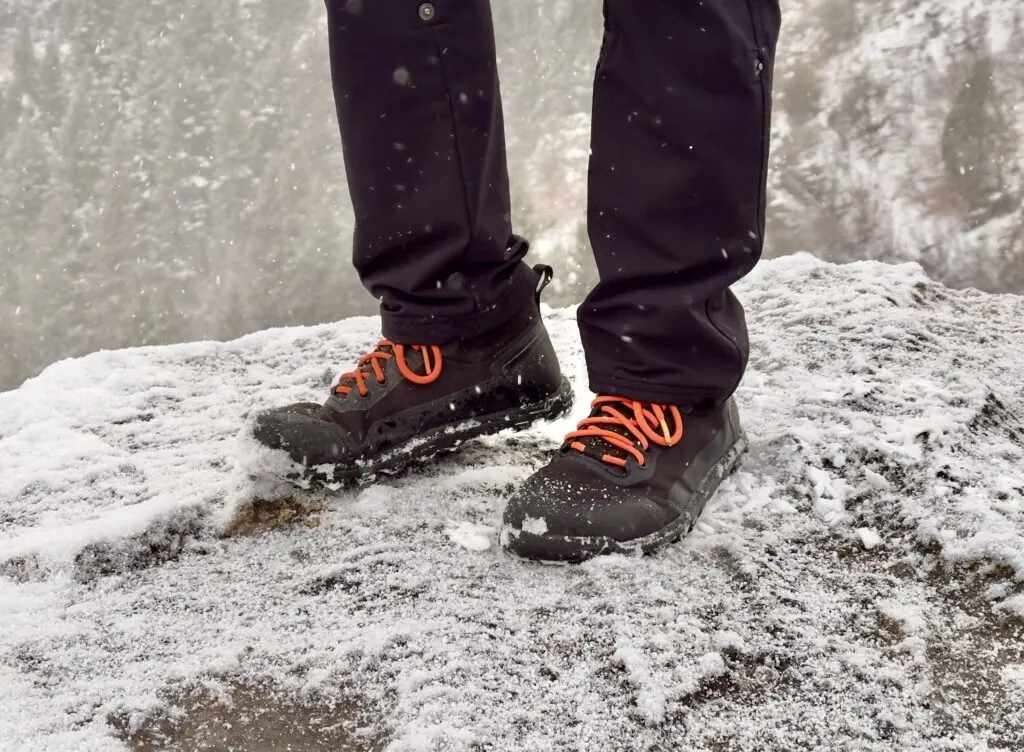
Waterproof + Warmth
We tested these boots in cool and cold conditions ranging from 50ºF to 30ºF. It’s dry in Utah, so didn’t rain much, but during a brief shower, they kept our feet dry. We also tested the waterproofness (after wearing and getting them dirty indoors by walking them through a full bathtub for a minute and then letting them sit in a few inches of water (that didn’t rise above the top of the tongue gusset) for 15 minutes. A paper napkin placed inside was mostly dry after all of it, though the shoes were a bit damp inside and there was a wet spot about the size of a golf ball on the napkin.
The boots were warm. Too warm, in fact, on a sunny 50ºF day in the mountains. On that occasion, my synthetic socks were pretty sweaty at the end of a 3-hour hike, indicating the boots may not be the most breathable. But on a two-hour, 30ºF hike in windy, snowy conditions when there was about an inch of snow on parts of the trail, our feet stayed plenty warm.
Price
Price is important to note, because these grounding boots don’t come cheap: a pair will run you $249, quite a bit over the average price for similar footwear, but still not so far over the price peak that we can’t understand why their so pricey. I mean, a lot of engineering went into these boots to ensure they were able to ground you as well as if you were barefoot. They just contain more electro-magnetic technology than traditional footwear. And for those who are all in on the practice of earthing, the price tag is likely well worth it. As a bonus, use code TERRADRIFT at checkout for a 10% discount!
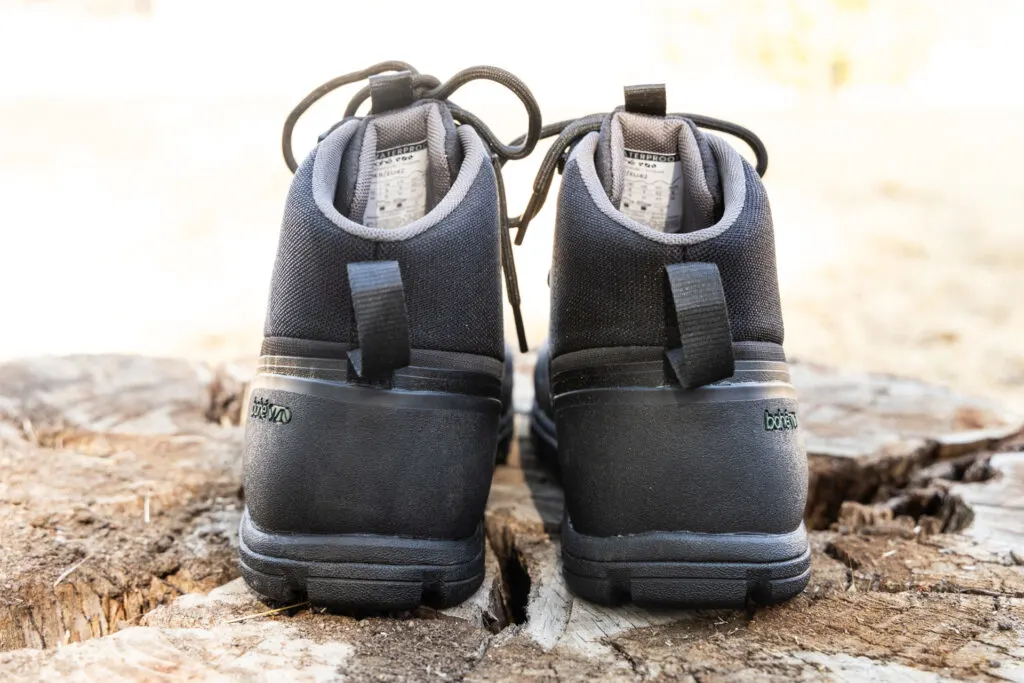
In Comparison…
If you’re trying to decide between the Bahé Boots and another pair of barefoot or minimalist waterproof boots, allow us to draw some comparisons to other shoes we’ve tested.
Compared to the Xero Shoes Scrambler Mid WP, the Bahé Boots have a much thicker and denser sole that’s more protective but less flexible. They also have less of a comfortable slipper-like feel as soon as you put them on and will likely require a longer break-in period. But they also feel more durable and robust if you’re tackling rough terrain or wearing them as work boots (not anywhere you need footwear to protect you from electrical current, please!!!). They are wider, offer more ankle support, and by far the most waterproof (tested via the same method as the Bahé boots above, the napkin placed inside was completely dry).
Compared to the Lems Boulder Boot, the soles of the Bahé Boots are a smidge thinner, though flexibility is similar. Width feels comparable, too, though the Bahé Boots can be tightened and cinched down more and feel thicker and warmer. The Lems boots do cut a more stylist silhouette, though (perhaps a matter of opinion). Both are constructed of durable materials. The Bahé boots were slightly less waterproof (tested via the same method as above, the napkin placed inside the Lems was dry).
How Bahé Boots are Sustainable
The main outer fabric of the Bahé Rediscover is a robust recycled nylon, the insole is made with 72% bio-foam and the outsole is 65% natural rubber instead of just synthetic. They also plant a tree for every pair sold and they’ll provide a shipping label when you’re done with your shoes so they can be sent to Jogon Recycling, a program that sends used shoes to folks who need them if they’re still wearable.
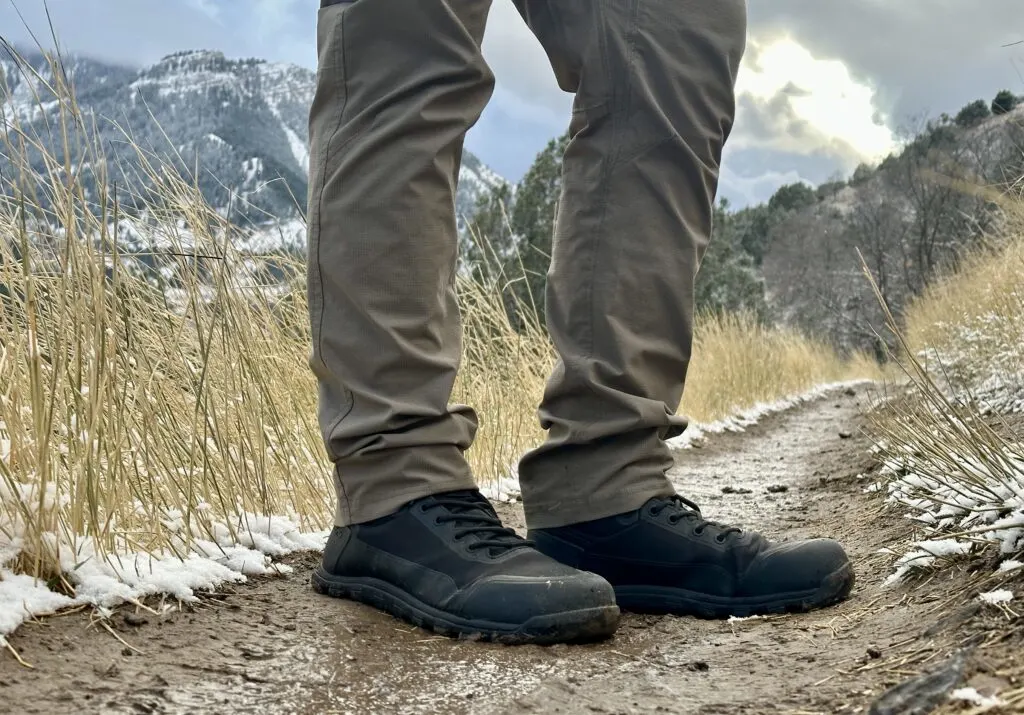
Bottom Line
The Bahé Rediscover grounding boots feel durable and like they’re going to stand up to plenty of seasons of abuse (and if they don’t, we’ll come back and let you know). They’re rugged, protective, have dense soles, and while they’re not as light or flexible as other barefoot boots, still offer a zero-drop sole and wide toe box for functional movement and foot-shaped comfort. Plus they’re pretty dang warm in the cold, and waterproofing is good.
However, whether they’ll keep you grounded and provide ANY of the benefits of earthing is dubious. We will conduct more testing using different socks and consult an electrical engineer to see if we get different results, but based on testing with a multimeter, they may not be conductive when worn with socks.
Based on fit, and due to a wider footbed, heel cup and toe box, they may be better suited for those with average or wider feet, as opposed to those with narrow feet, but they still weren’t terribly problematic for smaller feet. The price may make them seem a bit out of reach for some, and indeed, they are expensive, especially considering the unconfirmed conductive functionality.
That said, if you’re looking for a solid pair of protective boots for the winter, you could certainly do worse than the Rediscover. Especially if you’re OK trading a bit of ground feel for an extra sturdy sole. For those of you who want more flexibility, less weight, and still excellent waterproofing, check out these options.
**Because Bahé is still such a young company, they’re still operating on a pre-order system, which can also help prevent the waste that occurs when brands order way too many items and end up only selling a percentage. So as of this writing (November 24), the boots are currently on pre-order for arrival in January, just in time for snowy winter adventures.**
